Ford Fiesta - click above for a high res gallery
For all the strength that the U.S. automakers have shown in the realm of big trucks and SUVs over the last thirty years, they are remarkably weak when it comes to small cars. However, all that appears to be about to change quite dramatically. A plethora of stylish small cars are coming to market over the next 12-24 months wearing the badges of, at least, Ford and General Motors. Chrysler may even get in the action if it can consummate a deal with Fiat and get the 500. At the moment however, the first and perhaps most exciting example is the Ford Fiesta.
Ford sold the first-generation Fiesta in the U.S. for several years in the late '70s and early '80s in the wake of the second Middle East oil crisis. Since then, the Fiesta has remained a relatively popular option in Europe, but America had to make do mostly with the Escort and Focus along with a few years of the Kia-sourced Festiva and Aspire. Ford is now in the midst of re-focusing its efforts on cars with plenty of help of Europe. The first of those Euro-Fords will be the 6th generation Fiesta which arrives here around the end of this year. We had the chance to spend some time behind the wheel of the Fiesta in Manhattan during the New York Auto Show. Find out if the Fiesta is more Fit or Festiva after the jump.
Photos Copyright ©2009 Sam Abuelsamid / Weblogs, Inc.
Over the last several decades, small cars from Detroit tended to be really cheap, because American car buyers with plenty of access to cheap gas had no interest in paying more for what they considered to be less car. Over the last 5 years or so, that pay per pound attitude has started to change, as appealing smaller cars like the MINI and Honda Fit have been able to command somewhat (or in the case of the MINI substantially) higher prices. At a higher price point, buyers can get better quality materials and the amenities they expect in a larger car. The Fiesta is aimed squarely at the segment of appealing small cars.
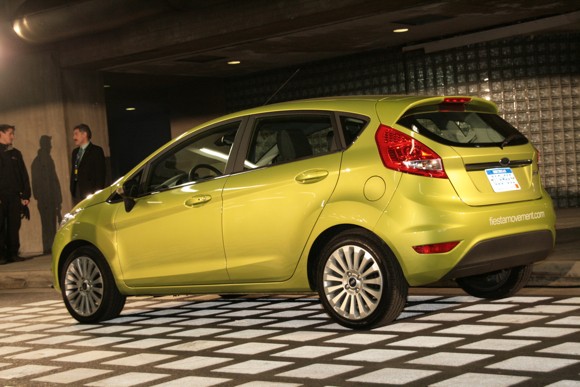
When the new Fiesta debuted in Europe last year, it took the kinetic design themes used on the Mondeo, Kuga and other cars to the B-segment. The result is a fantastic looking little car that Europeans can get in 3- or 5-door hatchback body styles. Fortunately, Americans will also have access to the hatchbacks in addition to a 4-door sedan. The production Fiestas for North America will be built a Ford plant in Mexico that formerly built F-150s but is currently being retooled for car production. The first batch of Fiestas to come here from Germany are being used for promotional programs including the social media-focused Fiesta Movement. Since they were built in Germany they are European-spec cars but the North American version will be almost identical apart from a few details.
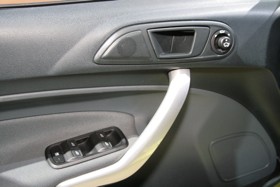
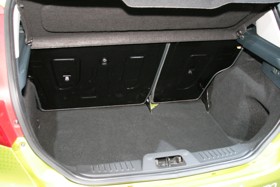
The North American and European Fiesta will be over 90 percent common with most of the changes driven by regulatory requirements such as the lighting. The U.S.-spec headlights will look the same but use different internal elements. There are also a few changes inside the car such as the adjuster for the front seat back angle. American drivers hate the rotary knob design typically used on European cars so that will be replace by a lever like those found here. The adjuster for the rear view mirrors is also being re-located from its position on the door panel facing the center of the car to a spot on top of the panel because drivers found the location awkward to use. What won't be changing, thankfully, is the design of the instrument panel which got carried over almost intact from the original Verve concept. The soft touch materials on the dash board are also coming intact, giving the interior a high quality feel that American consumers have not been accustomed to in this segment.
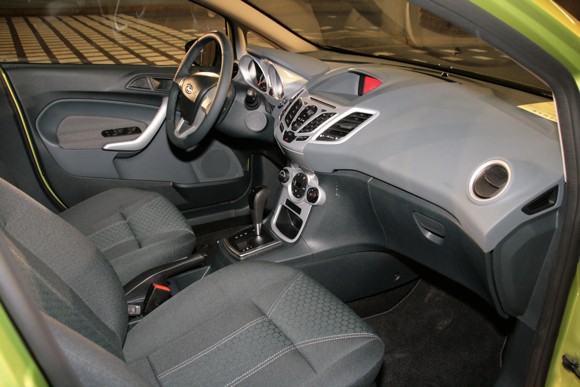
The Fiesta's most obvious competitor is the Honda Fit and, in most respects, the Ford feels as good or better than its Japanese counterpart. The interior fit and finish and materials are at least as good and most cases better than the Honda. The one advantage the Fit has in packaging. The Fit is 6 inches longer and four inches taller than the new Ford. The front seat area of the Ford feels as roomy as the Honda and the seats proved very comfortable, although, as with the Fit, the lower cushions were a bit short. Where the Fit races ahead is rear seat room which feels absolutely cavernous for such a small car. The Fiesta's back seat is certainly usable for two adults but it is much more cozy back there.
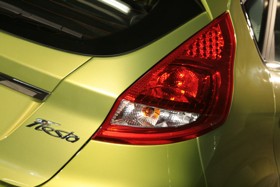
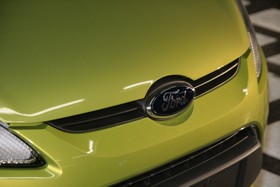
As we drove away from the Javits convention center, the inside of the Fiesta proved to be a very pleasurable place to be. Those familiar with the nimble handling characteristics of a Fit or MINI will feel right at home in the Ford. The electrically-assisted steering is nicely weighted and our limited exposure seems to point to decent feedback although a lengthier ride will give us a better impression of what to expect. The suspension seems to have a better balance between ride and handling than the MINI which can sometimes feel a bit harsh on rougher pavement. The Fiesta absorbed Manhattan potholes without difficulty and never felt floaty or soft.
Europeans get a variety of gas and diesel engines to choose from, ranging from 1.25-liters to 1.6-liters in displacement. As is usually the case, we'll only get the largest gas engine, Ford having no inclination to offer diesels to American drivers. The 1.6-liter gas four cylinder puts out 118 hp in European trim and our test example was paired up with a 5-speed manual gearbox. Ford also plans to add a 6-speed dual clutch transmission to the Fiesta as an option. The 5-speed we drove is rated at 40 mpg (U.S.) on the EU combined test cycle and Ford expects the U.S. version to easily exceed 40 mpg highway on the EPA cycle. American drivers will likely find that they have no complaints about the 1.6-liter engine.
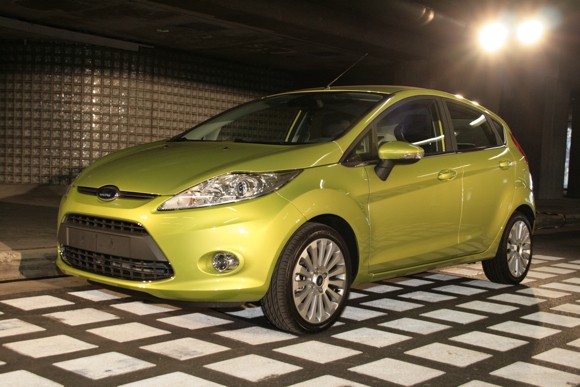
When we got stuck in Manhattan traffic, a quick squeeze of the gas had the Fiesta squirting into gaps between cabs and trucks and its diminutive size made it easy to fit in. The Euro Fiesta is rated at a credible 9.9 seconds for the 0-62 mph sprint which should be plenty for almost everyone's needs. The brakes also felt solid and easy to modulate and Fiesta's will come standard with anti-lock brakes and electronic stability control. Sometime in the next 2-3 years Ford will also add an EcoBoost engine to the Fiesta lineup, likely a 1.2-liter that should further improve mileage without sacrificing performance. In the meantime, assuming people start buying cars again, Americans should find themselves quite content with the Fiesta when it starts to arrive around the end this year. Pricing won't be announced until launch time, but Ford has indicated it will be competitive with the Fit, or likely around $13-18,000.

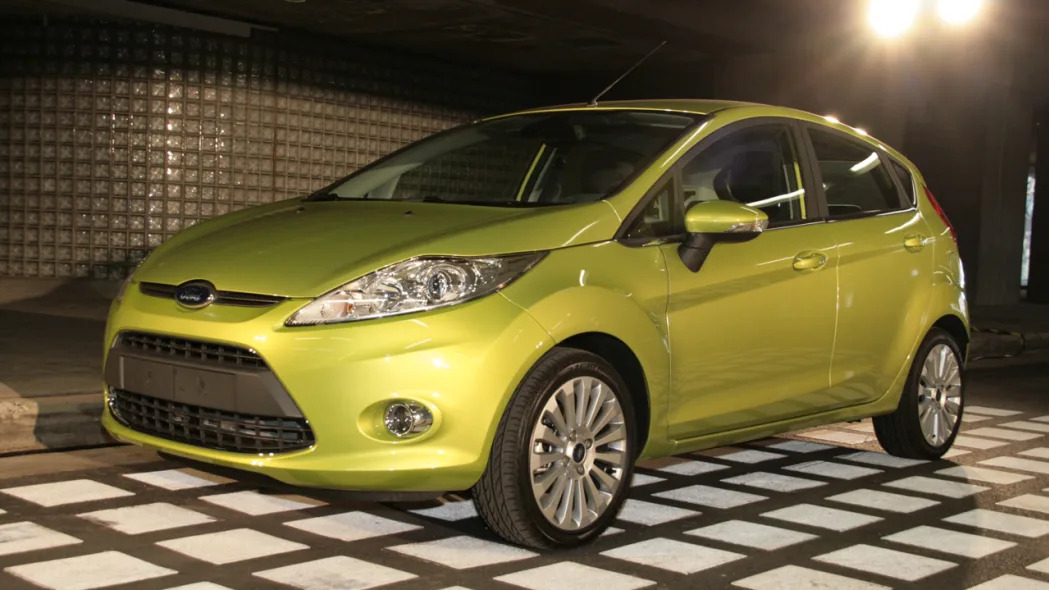

Sign in to post
Please sign in to leave a comment.
Continue